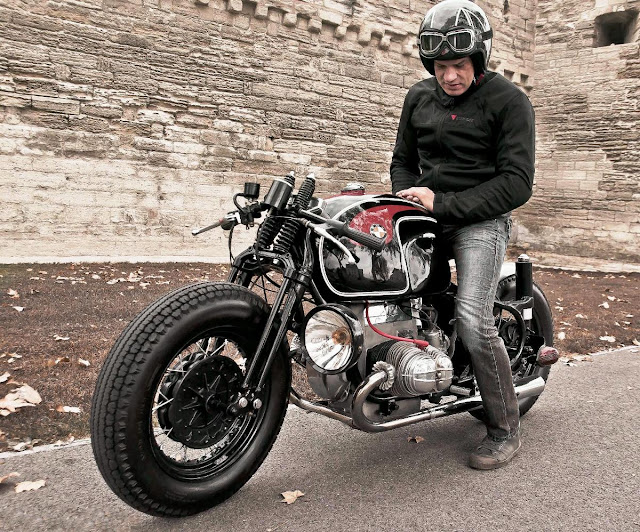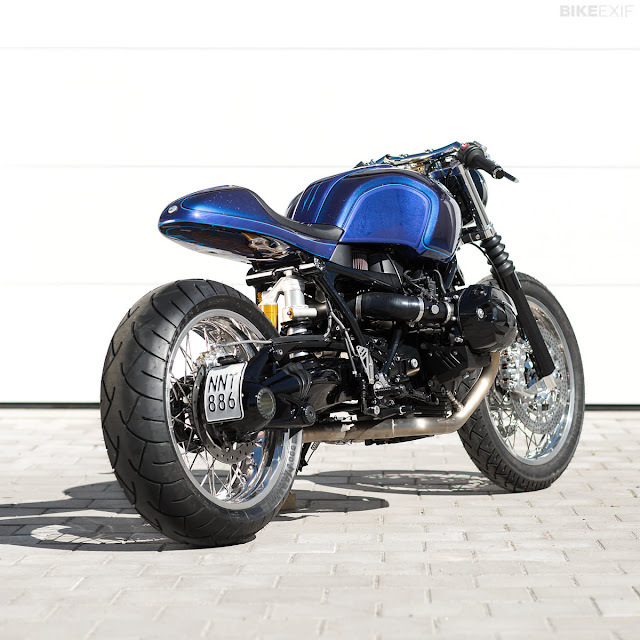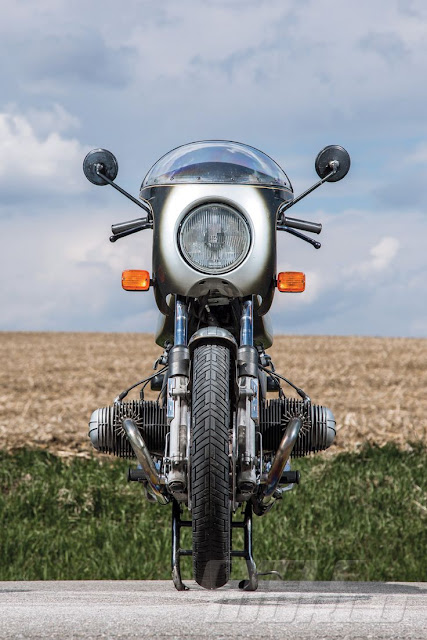BMW R90S
Dell'Orto pumper curbs and high-compression pistons raised the 898cc boxer motor's out
The R90S's fairing was as important as its engine in increasing practical performance.
On pure performance, BMW's R90S was not the fastest superbike of the mid-1970s. Nor was it the quickest around a racetrack; at least, not often. But for a rider with a long distance to travel on straight roads and twisty ones, there was nothing on two wheels that would prove faster or more comfortable than the uniquely well-equipped flat twin.
The BMW’s distinctive smoked paint scheme was perfectly in keeping with its image as a very refined and expensive sports-tourer. In many respects, the R90S was the best all-round superbike of its day. Certainly, no other production machine could match its combination of 125mph (201 km/h) top speed, relaxed high-speed cruising ability, fine handling, reliability and impeccable finish.
BMW had plenty of practice in building horizontally opposed twins, and it showed. The R90S came from a line of flat twins stretching back to Max Fritz's original R32 of 1923. The German firm had been building competent, comfortable and conservative tourers for many years. But this bike, shaped by noted stylist Hans Muth, had a distinctly more aggressive personality.
The basics were typical BMW. Like the naked R90/6, which was launched at the same time in 1973, the R90S owed much to the previous year's R75. Enlarging the 745cc R75’s bore from 82 to 90mm while retaining the 70.6mm stroke increases capacity to 898cc. BMW also made a few other updates, including a revised gearchange mechanism, more powerful 280W alternator and stronger bottom end.
There was more to the S-bike than just its fairin_ The engine was given a higher compression ratio. 9.5:1 against the 9:1 of the R90/6, and breathed ii through big 38mm Dell'Orto carbs with accelerate pumps. Maximum power was 67bhp at 7000rpm. an increase of 7bhp over the standard model. The R90S also had a steering damper in its cockpit, a larger fuel tank and a second front brake disc.
The extra power gave the S model a worthwh boost at high revs, without hindering either its torquey mid-range response or its smoothness at most engine speeds. Better still, the fairing meant the engine's performance could be fully exploits by the rider, who was free of the wind-blast generated by every rival superbike. Other manufacturers would soon follow BMW’s lead, but for the moment the fairing put the R90S in a class of its own.
Comfortable ride
Handling was good, too, despite suspension that was soft enough to give a comfortable ride. Notwithstanding its steering damper the S sometimes felt light at the front when approaching its top speed, but that was even more true of most naked rivals. The twin-disc front brake system was reliable but lacked feel until uprated in 1975. Neat touches included a dashboard clock, generous fuel range of 200 miles (322km) or more, and a seat that allowed the rider to cover that distance in comfort.
BMWs had never been cheap, and the R90S, with its all-inclusive specification, was no exception to this rule. In many markets it was more than twice the price of Honda’s CB750. That ensured the R90S would be ridden only by a select band of riders. Although the bike was a success, it was outsold by the standard 90/5.
Those riders fortunate enough to cover serious distance on the R90S knew that it was a very special motorcycle. If what you needed was a speed, handling ability and comfort, the R90S delivered in style. Oh, and sometimes it was the quickest superbike round a racetrack, too. BMW ace Reg Pridmore’s victory in the 1976 US Superbike championship was proof of that.
At heart the R90S was a traditional BMW boxer, but its fairing and especially its bold smoked grey or orange paint schemes gave a much more modern and attractive look. The bike's performance was backed by typically practical features including gaitered forks, a generous dual seat and shaft final drive.
Although the R90S chassis was built for comfort as much as speed, the bike ’.v rigid frame and fairly well- controlled suspension gave reliable handling. On long journeys, especially, few contemporary superb: ■ > could match the efi'oriu performance o ’ BMW flagship, which unfortunately had a hefty price tag to match its impressive specification.
Specification BMW R90S (1974)
- Engine Air-cooled ohv four-valve pushrod flat twin
- Capacity 898cc (90 x 70.6mm)
- Maximum power 67bhp @ 7000rpm
- Transmission Five-speed, shaft final drive
- Frame Steel twin downtube
- Suspension Telescopic front; twin shocks rear
- Brakes Twin discs front; single disc rear
- Weight 474lb (215kg) wet
- Top speed 125mph (201 km/h)





















![Bridgestone Logo, HD, Png and Vector Download Desk Screen [Jan-2018] Bridgestone Logo, HD, Png and Vector Download Desk Screen [Jan-2018]](https://4.bp.blogspot.com/-7vi_XzJzKuw/WeGVPjZaVcI/AAAAAAAAOcE/VDyGdVh4E6gwAvSR9qKoNvCTbdAop6MgACLcBGAs/w110-h90-c/bridgestone%2Bb%2BLogo%2BVector%2Bwallpaper.jpg)

0 comments: